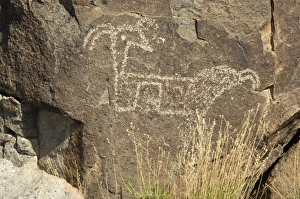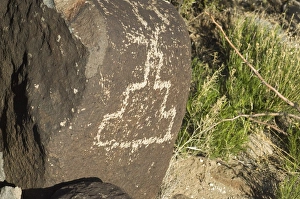Mogollon Culture Collection
The Petroglyphs of the Jornada-Mogollon culture in New Mexico offer a fascinating glimpse into the ancient civilization that once thrived in this region
All Professionally Made to Order for Quick Shipping
The Petroglyphs of the Jornada-Mogollon culture in New Mexico offer a fascinating glimpse into the ancient civilization that once thrived in this region. These intricate carvings etched onto rocks tell stories of a people who inhabited these lands thousands of years ago. The Mogollon culture, named after the Mogollon Mountains where it was first discovered, flourished from around 200 CE to 1450 CE. They were skilled farmers and hunters, adapting to their environment by cultivating crops such as maize, beans, and squash. Their settlements ranged from small villages to larger towns with complex social structures. One of the most remarkable aspects of the Mogollon culture is their artistic expression through petroglyphs. These rock carvings depict various scenes including animals, human figures engaged in daily activities like hunting or farming, and symbols representing their spiritual beliefs. Each petroglyph tells a story passed down through generations. Studying these petroglyphs has provided valuable insights into the lives and customs of the Jornada-Mogollon people. Archaeologists have been able to decipher some meanings behind certain symbols and patterns found on these rocks. For example, spirals may represent water or fertility while concentric circles could signify celestial bodies or sacred spaces. These petroglyphs also serve as a reminder of how deeply connected ancient civilizations were with nature and spirituality. The Jornada-Mogollon people revered natural elements like mountains, rivers, and animals which are often depicted alongside human figures in their artwork. Preserving these invaluable pieces of history is crucial for understanding our past and honoring those who came before us. Efforts are being made to protect these sites from vandalism or erosion caused by weather conditions so that future generations can continue learning about this rich cultural heritage.


